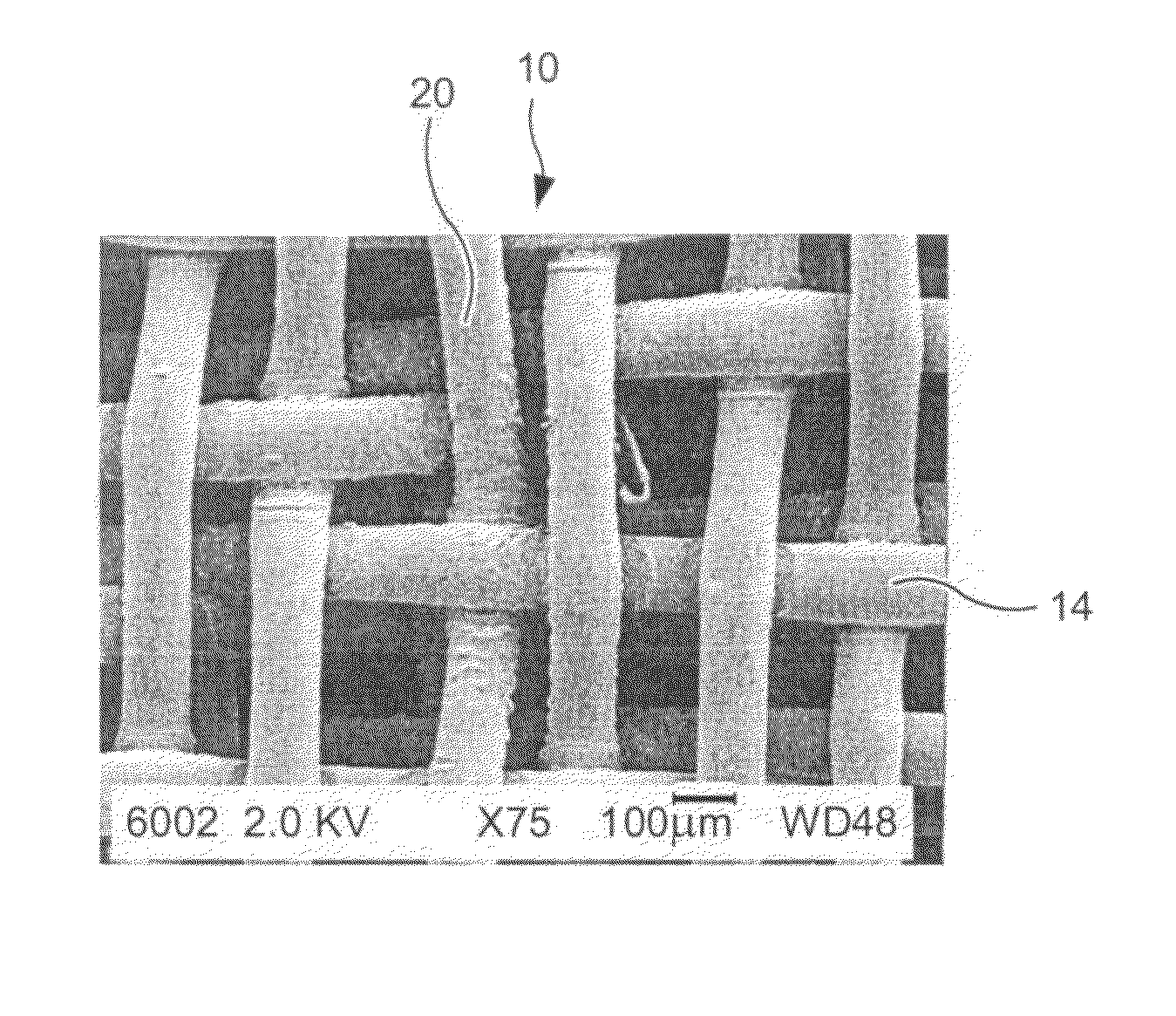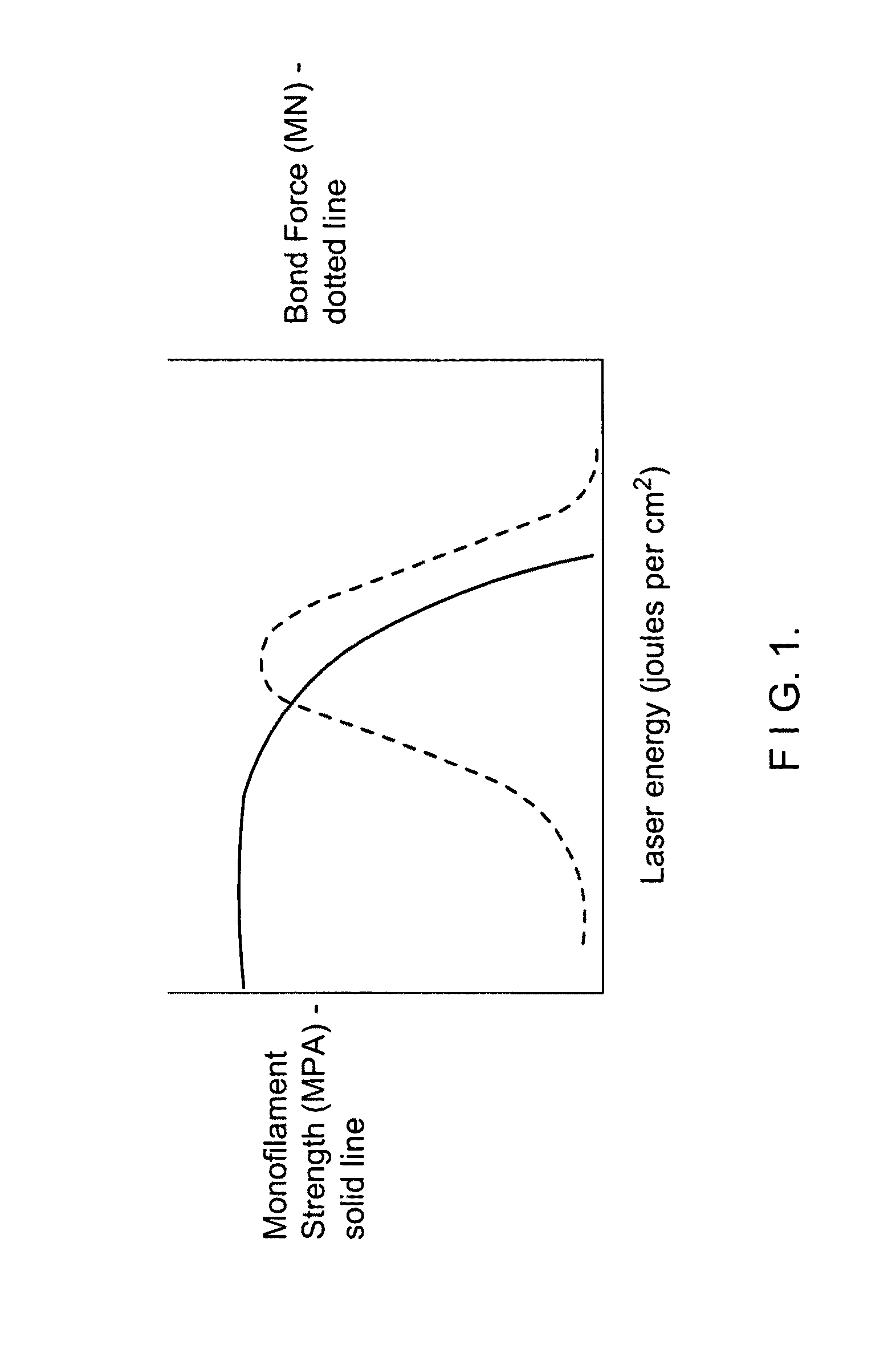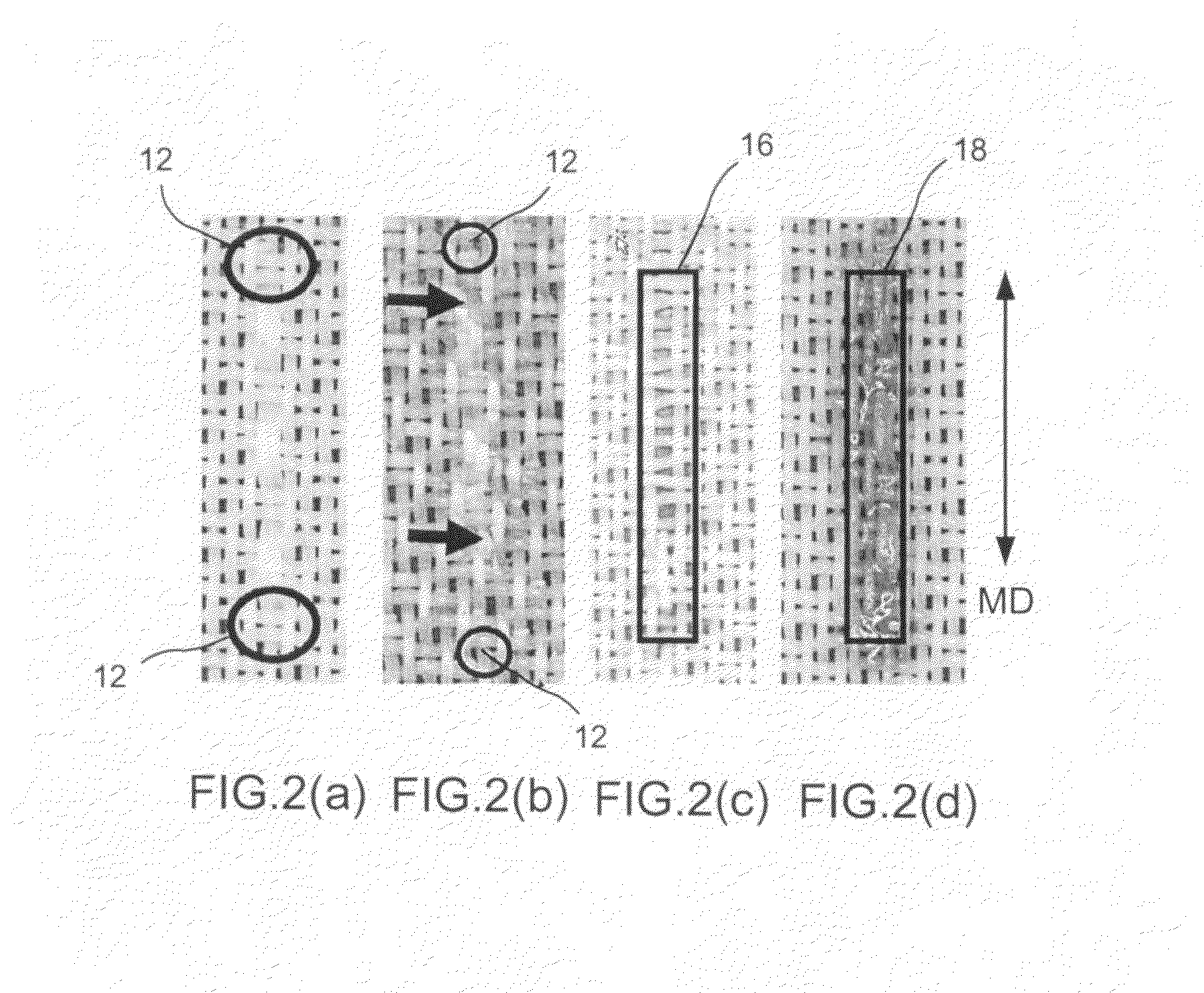Process for producing papermaker's and industrial fabric seam and seam produced by that method
a technology of industrial fabric and papermaking, which is applied in the field of papermaking and industrial fabric seam and seam produced by that method, can solve the problems of fabric pulling apart, seam failure, md yarn ends literally sliding past one another, etc., and achieves the effect of improving fusion/bonding and increasing seam strength
- Summary
- Abstract
- Description
- Claims
- Application Information
AI Technical Summary
Benefits of technology
Problems solved by technology
Method used
Image
Examples
example i
[0112]A double layer fabric was woven and seamed with yarns containing a laser energy absorbing material. The fabric seam was exposed to the laser energy source in one area, and left unfused in another area. Samples were then removed of the corresponding seam areas, and breaking strength was measured. A 53% increase in breaking strength was reported.
example ii
[0113]Triple layer SSB fabrics of various designs were woven, and the seams had laser energy absorbing material present in desired locations. After exposure to a laser in one area of the seam, samples were removed of unfused and fused seam areas. Seam strength increases of up to 129% were reported.
example iii
[0114]In another experiment, a triple layer SSB fabric with a shorter (in the MD) seam that contained laser energy absorbing materials in the yarns was exposed to laser energy in a portion of the seam. Samples of the fused and unfused areas of the seam were tested, and a 47% increase in breaking strength was reported.
PUM
| Property | Measurement | Unit |
|---|---|---|
| width | aaaaa | aaaaa |
| diameter | aaaaa | aaaaa |
| diameter | aaaaa | aaaaa |
Abstract
Description
Claims
Application Information
 Login to View More
Login to View More - R&D
- Intellectual Property
- Life Sciences
- Materials
- Tech Scout
- Unparalleled Data Quality
- Higher Quality Content
- 60% Fewer Hallucinations
Browse by: Latest US Patents, China's latest patents, Technical Efficacy Thesaurus, Application Domain, Technology Topic, Popular Technical Reports.
© 2025 PatSnap. All rights reserved.Legal|Privacy policy|Modern Slavery Act Transparency Statement|Sitemap|About US| Contact US: help@patsnap.com



